Cacio e Pepe Pizza
Ever wondered what would happen if your favorite pasta dish jumped onto a pizza?
That’s exactly what this Cacio e Pepe Pizza delivers – all the peppery, cheesy glory of the Roman pasta classic, but in crispy, chewy pizza form.
This isn’t just another white pizza; it’s an elegant transformation that’ll make you question why you haven’t been making this your whole life.
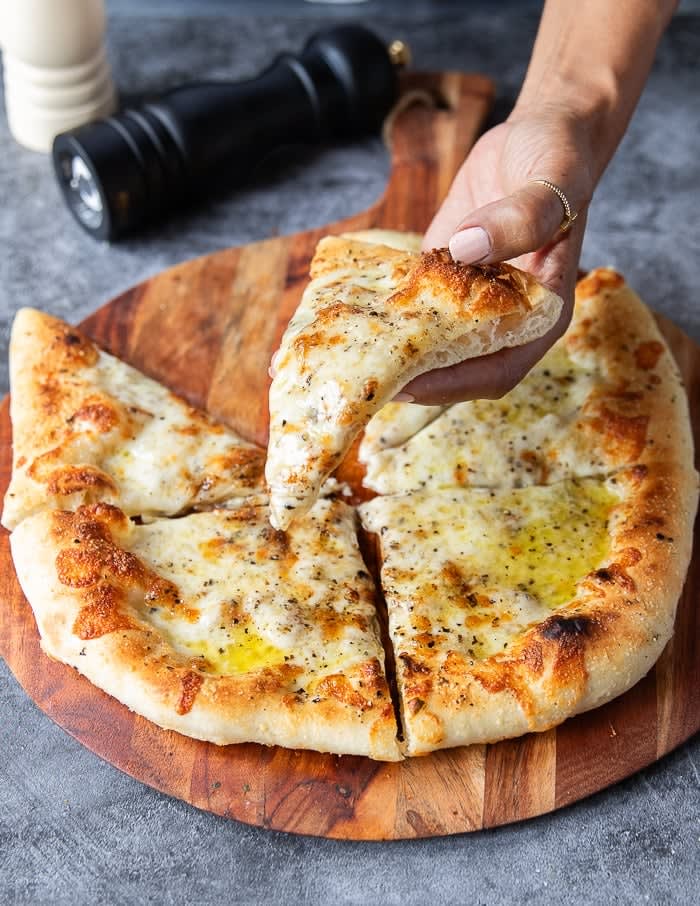
The magic of this pizza lies in its beautiful simplicity.
A perfectly fermented dough creates those coveted air pockets and crispy-chewy texture, while the combination of sharp Pecorino Romano and freshly cracked black pepper creates a flavor explosion that’s simultaneously sophisticated and comforting.
The slow fermentation process might require patience, but trust me – the complex flavors that develop are absolutely worth the wait.
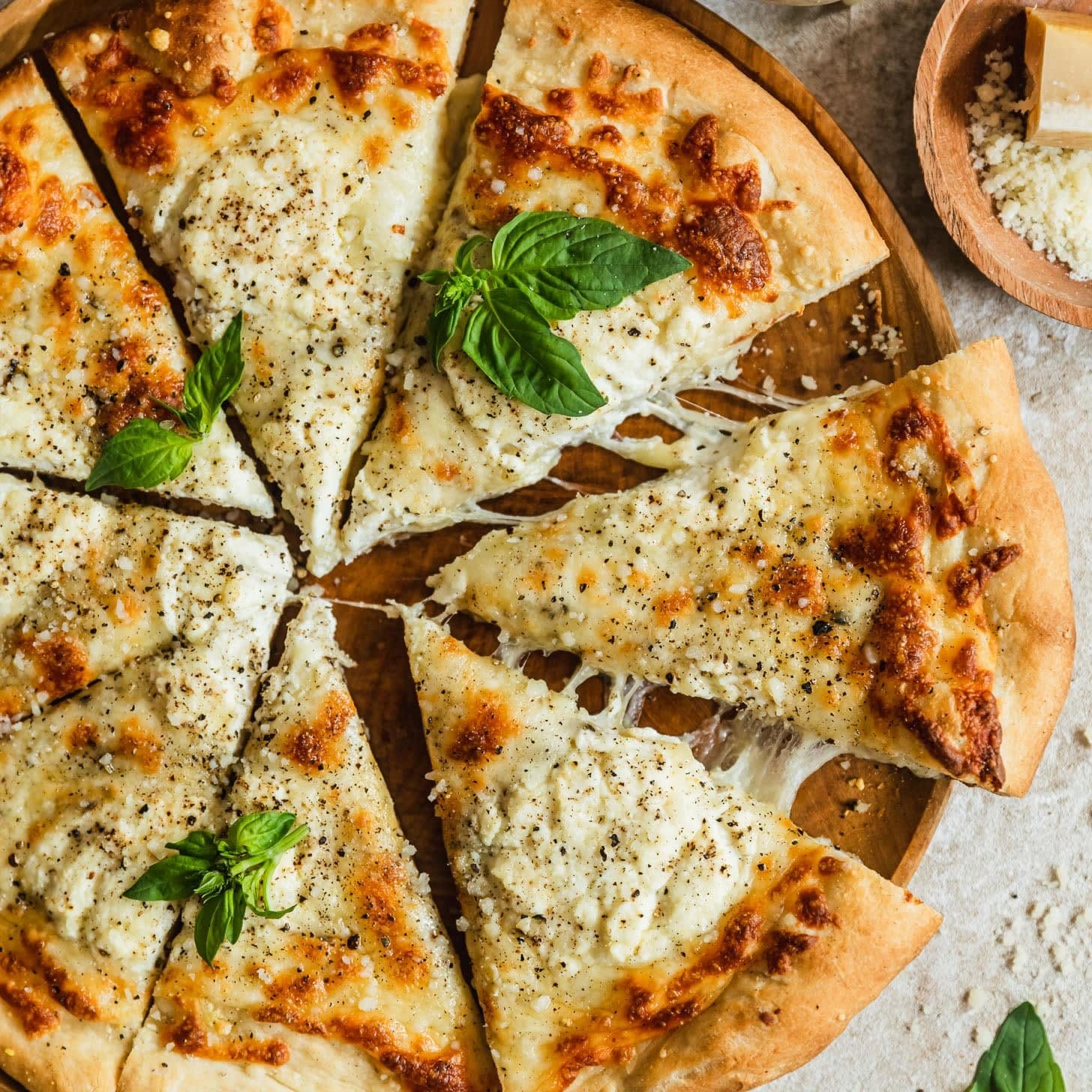
Ingredients
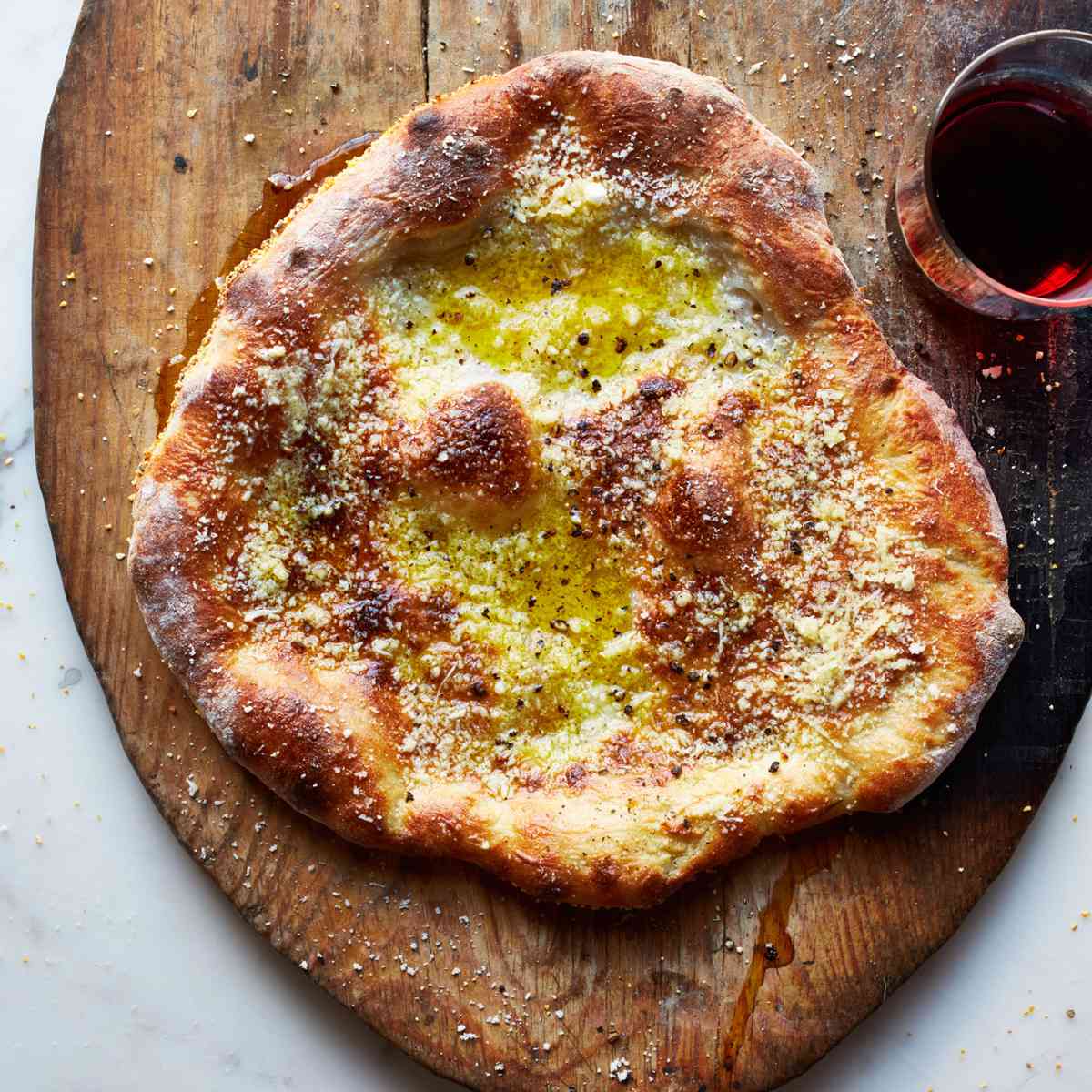
For the Pizza Dough:
- 1/8 teaspoon active dry yeast
- 7 1/4 cups all-purpose flour
- 1 tablespoon kosher salt
- 3 cups water (heated to 80°F)
- Canola oil, for greasing and brushing
- Cornmeal, for sprinkling
- 1 cup crushed ice
For the Topping:
- 1 1/2 cups (4 ounces) finely grated Pecorino Romano cheese
- Extra-virgin olive oil, for drizzling
- Freshly ground black pepper
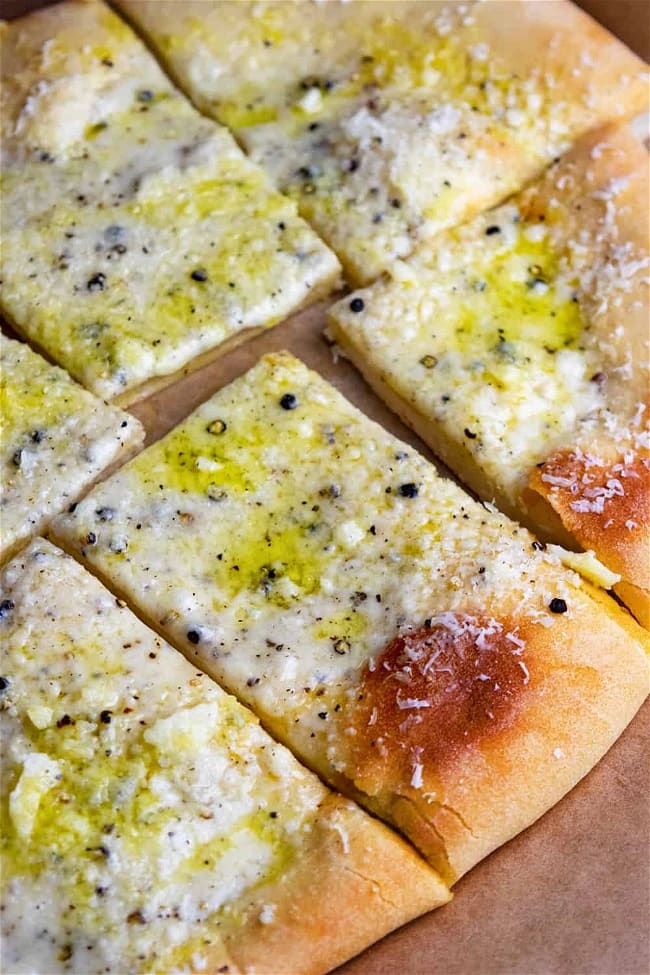
Steps
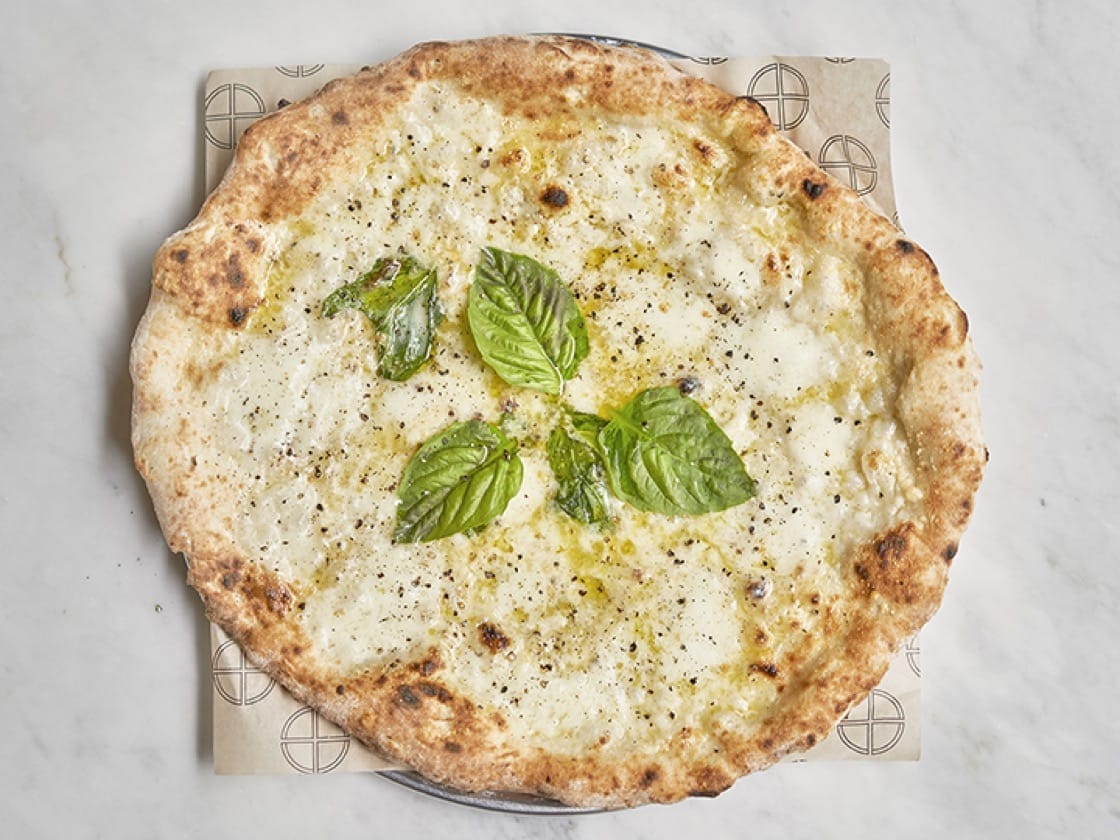
- In a medium saucepan, heat 3 cups of water to exactly 80°F (27°C). Use a kitchen thermometer for accuracy – too hot will kill the yeast, too cool will slow fermentation. Transfer 2 tablespoons of the warm water to a small bowl and whisk in the yeast until completely dissolved. In a large bowl, combine the flour with the remaining warm water and stir with a wooden spoon until a shaggy dough forms – it should look uneven and rough at this stage. Cover both bowls with plastic wrap and let stand for 30 minutes to allow the flour to fully hydrate.
- Mix the salt into the yeast mixture (this prevents the salt from directly inhibiting yeast activity) and add to the dough in the large bowl. Knead with slightly wet hands until all of the liquid is absorbed; the dough will be quite wet and sticky – this is normal and creates those beautiful air pockets later. Cover with plastic wrap and let stand at room temperature for 30 minutes.
- With a dampened hand to prevent sticking, lift one edge of the dough, stretch it up about 6-8 inches and fold it over the top of the dough. Turn the bowl a quarter turn, lift up the edge of the dough, stretch it up and fold it over the top. Repeat until you’ve turned the bowl all the way around (4 total folds). This develops gluten without overworking the dough. Cover the bowl with plastic wrap and let the dough stand for 30 minutes. Repeat the lifting and folding one more time, then transfer the dough to a large bowl greased with 1-2 tablespoons of canola oil. Cover with plastic wrap and let stand at room temperature until tripled in bulk, about 12 hours – look for a very puffy, bubbly texture.
- Turn the dough out onto a lightly floured work surface (use just enough flour to prevent sticking) and cut into six equal pieces using a bench scraper or sharp knife. Take one piece of dough and gently pull the edge into the center, then place seam side down on the work surface. Roll the dough into a ball using the tension of the counter against the dough, being careful not to tear the surface. Set on an oiled baking sheet. Repeat with the remaining 5 pieces of dough, arranging them 3 inches apart on the sheet to allow for expansion. Brush the rounds with a thin layer of canola oil and cover with plastic wrap. Refrigerate for at least 8 hours or up to 12 hours to develop flavor.
- Remove dough from refrigerator and let stand at room temperature for 30 minutes – cold dough will be too tight to stretch properly. Preheat the broiler to high. Place an inverted baking sheet or a pizza stone in the oven 8 inches from the heat source and allow it to preheat for at least 20 minutes until extremely hot. Invert a second baking sheet and dust liberally with cornmeal – this creates a makeshift pizza peel for easy transfer.
- On a lightly floured surface, use your fingertips to press one ball of dough into a 6-inch round, leaving a 1/2-inch border around the edge and keeping the center slightly thicker than the rest. This technique preserves air bubbles and creates the perfect crust. Use your palms to gently press and stretch the dough into a 10- to 12-inch round – if the dough resists stretching, let it rest for 5 minutes and try again. Transfer to the cornmeal-dusted sheet and slide onto the hot sheet in the oven with a quick jerking motion. Place 2 tablespoons of ice in the center of the dough (this creates steam for a better rise) and bake for about 8 minutes, until golden with charred spots. Immediately sprinkle 1/4 cup of the cheese all over the pizza, drizzle with a thin stream of olive oil, and season generously with freshly ground black pepper. Serve immediately while the cheese is still melting. Repeat to make five more pizzas, reheating the stone between batches if necessary.
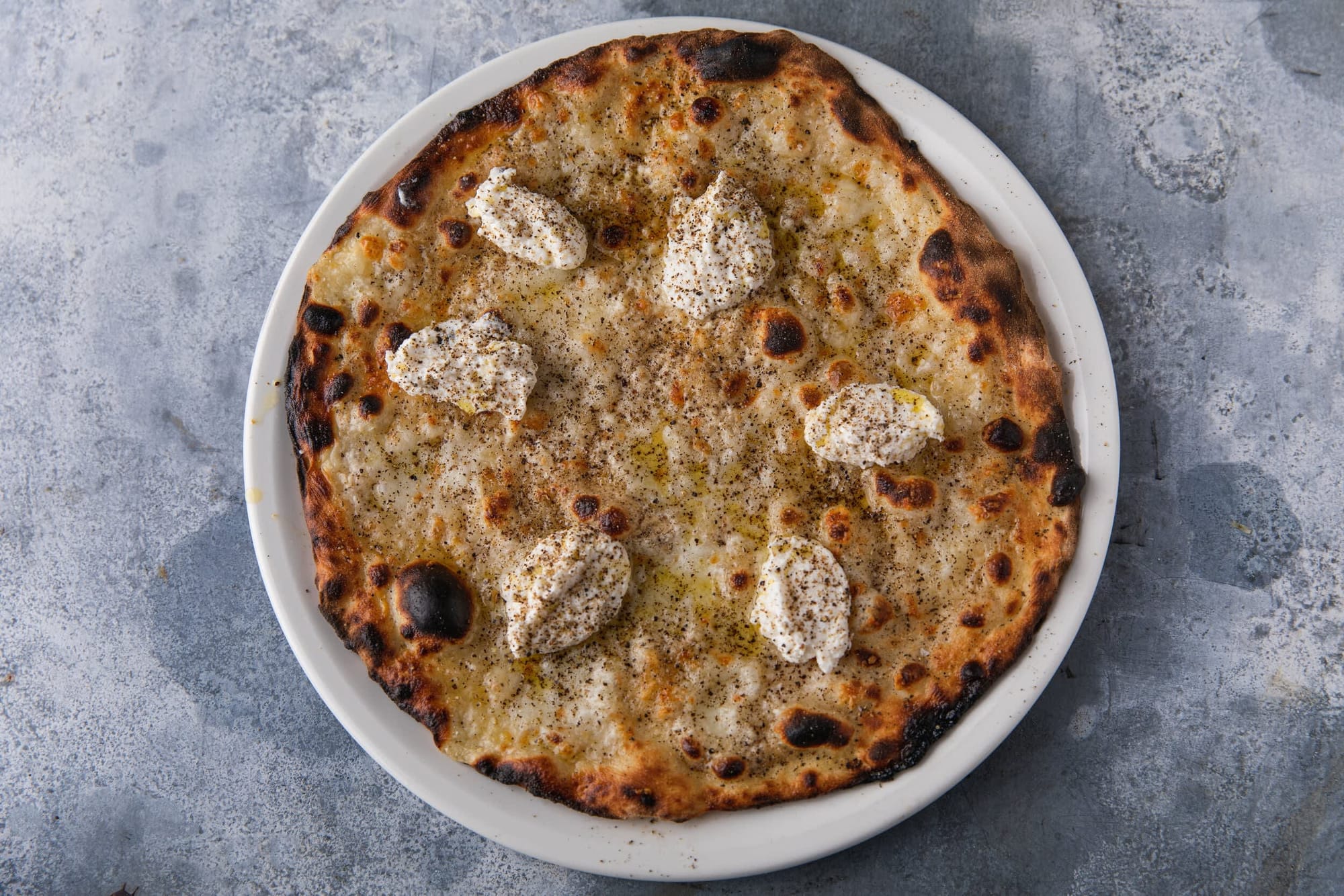
Smart Swaps
- Use tipo 00 flour instead of all-purpose for an even more authentic Italian texture (keep the same measurements)
- Substitute 1/2 cup of the Pecorino with Parmigiano-Reggiano for a slightly nuttier flavor profile
- Add 1 tablespoon of semolina flour to the dough for extra crispiness and flavor
- Try grapeseed oil instead of canola for a more neutral flavor base
Make It Diabetes-Friendly
- Replace 2 cups of all-purpose flour with 2 cups of whole wheat flour to reduce the glycemic load by approximately 30% per serving
- Use a combination of 3/4 cup Pecorino and 1/2 cup nutritional yeast instead of all cheese to reduce fat while maintaining flavor
- Make 8-inch pizzas instead of 12-inch to reduce portion size (creates 9 smaller pizzas instead of 6 large)
- Add 1 tablespoon of ground flaxseed to the dough to increase fiber content, which slows carbohydrate absorption
- Pair with a small side salad dressed with olive oil and vinegar to further reduce glycemic impact of the meal
Pro Tips
- For the crispiest crust, let your oven and stone preheat for at least 45 minutes before baking
- Weighing your flour (around 875g) instead of measuring by volume ensures perfect consistency every time
- The dough should be quite wet – resist the urge to add extra flour
- Fresh, coarsely ground black pepper makes all the difference – grind it right before serving
- For an extra punch of flavor, infuse your olive oil with garlic and herbs for 24 hours before drizzling